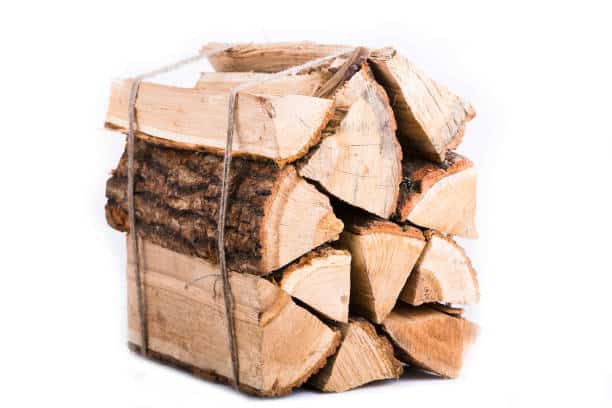Bundling firewood is a common worldwide task, regardless of season or climate. Firewood is an excellent source of warmth and comfort, but proper bundling and storage are essential for it to remain usable. Knowing how to bundle your firewood correctly will ensure it stays dry and secure in all weather conditions, allowing you to maximize your investment. There are various methods of bundling firewood, each with advantages and disadvantages.
If you are interested in cord costs, please read our article about how much a Cord of Wood costs.
What’s the Best Way to Bundle Firewood?
The best way to bundle firewood comes in three:
- Shrinkwrapping: done with packaging machinery.
- Strapping: a plastic substrate to bundle items.
- Stretch wrap: a plastic known as elastic recovery used to bundle products.

The most popular method of bundling firewood is shrinkwrapping, which involves using packaging machinery to tightly wrap the wood in plastic film. This method provides a secure seal that helps keep moisture out and prevents debris from entering the bundle. Additionally, it makes stacking the bundles easier as they can be stacked on top of one another without worrying about them coming apart or shifting around too much. The downside to this method is that it requires access to packaging machinery, which may not always be available or accessible.
Strapping is another option for bundling firewood that some people prefer due to its low cost and availability. This method uses a plastic substrate material such as polyethylene terephthalate (PET) strips or bands wrapped around logs multiple times before being secured with ties or buckles. Strapping provides a firm hold without crushing wood fibers like shrinkwrap can, making it suitable for carrying fragile items such as kindling or splitters when transporting them over long distances. However, strapping does require more time than shrinkwrapping as each log must be individually wrapped several times before being tied off securely at both ends.
Stretch wrap is another option for bundling firewood, which utilizes a plastic known as elastic recovery material such as polypropylene (PP), polyethylene (PE), nylon (Nylon-6), or vinyl (PVC). This material is designed to cling tightly around items when stretched over them so that even small things can be securely fastened into bundles without using traditional ties or straps. Stretch wrap also provides an additional layer of protection against water damage by creating an airtight seal around the logs so that no moisture can penetrate from the outside environment into the bundle itself. Its primary disadvantage is its cost since stretch wrap tends to be significantly more expensive than other materials used for bundling purposes, such as strapping and shrinkwrap films.
Overall, all three methods – shrink wrapping, strapping, and stretch wrapping – provide advantages when bundling firewood securely. Still, each has its strengths and weaknesses depending on individual needs and budgets. For those looking for an affordable solution with quick results, strapping may be your best bet, while those willing to invest in creating airtight bundles should consider using stretch wrap instead. Ultimately, choosing the best depends on your situation, so spend time researching all three options before deciding what works best for you!
- Facebook Ads to Get Followers! - December 27, 2024
- ClickUp vs. Slack - December 20, 2024
- Mastering E-Commerce Analytics: A Blueprint for Success





